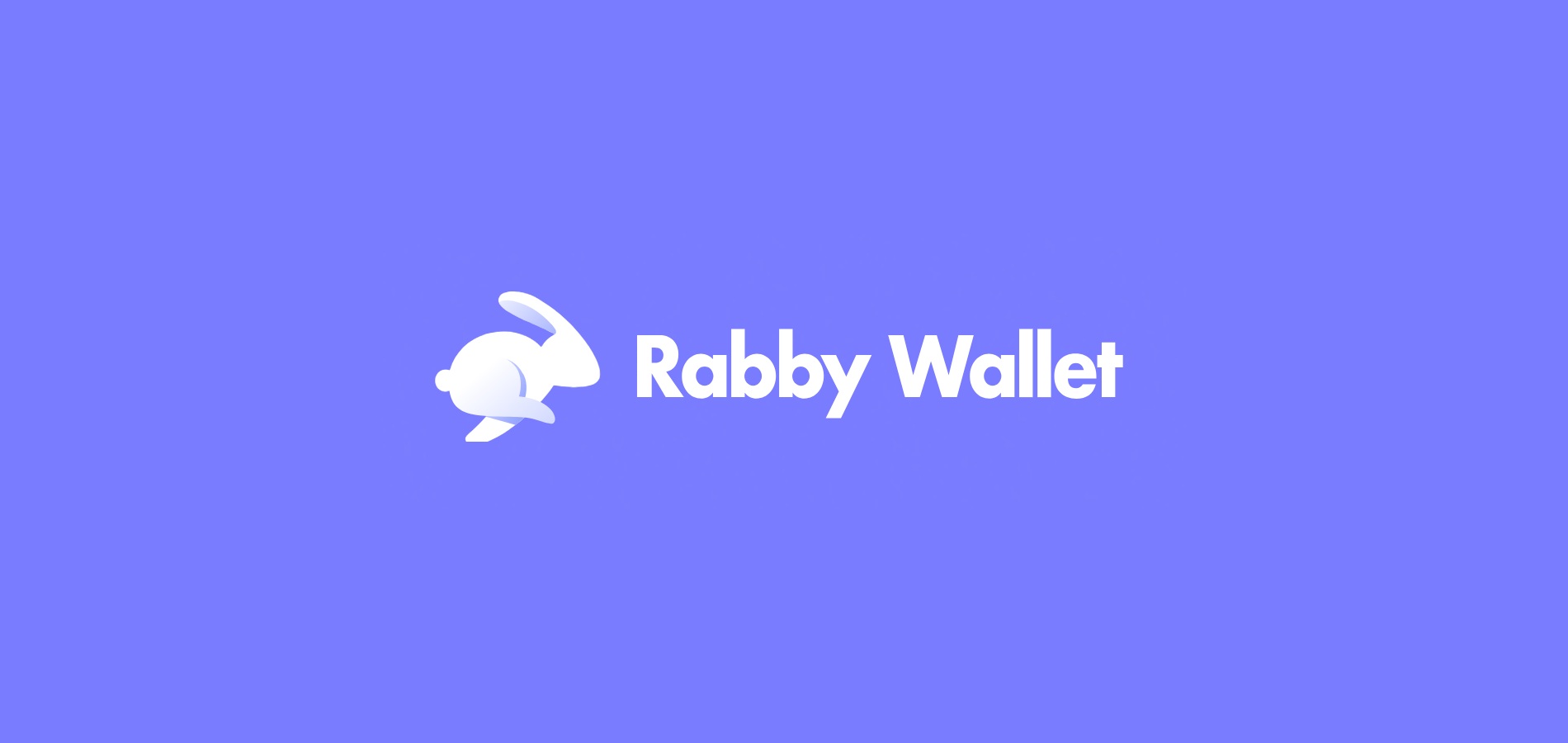Introduction to Pepe (PEPE) Tokens
Introduction to Pepe (PEPE) Tokens
Pepe (PEPE) is a community-driven, decentralized meme token on the Ethereum blockchain. As an ERC-20 token, it allows users to participate in DeFi, trade on exchanges, and engage with NFT marketplaces and other blockchain applications.
Managing PEPE efficiently necessitates a compatible wallet, be it hardware, mobile, desktop, or web-based. This guide discusses different wallet options, how to add and transfer PEPE, and underscores vital security practices to protect your assets.
Choosing the right wallet is essential for seamless transactions, trading, and interaction with PEPE-based decentralized apps (dApps). Hardware wallets offer superior security by keeping private keys offline, whereas software wallets like MetaMask, Trust Wallet, and Rabby Wallet balance accessibility with security, facilitating asset management. Several of these wallets integrate with DeFi platforms, allowing users to swap PEPE, partake in decentralized exchanges (DEXs), or engage in NFT trading.
Moreover, safeguarding your private keys, recognizing phishing attempts, and activating two-factor authentication (2FA) are crucial steps to avoid unauthorized access to your funds. Whether you are trading, using DeFi, or investing for the long haul, a dependable PEPE-compatible wallet ensures effective PEPE management while reducing security risks.
Choosing the Right Wallet for Your PEPE Tokens
Choosing the Right Wallet for Your PEPE Tokens
Types of PEPE Wallets
Pepe (PEPE) is a meme-inspired cryptocurrency built on the Ethereum blockchain. As an ERC-20 token, it requires a compatible wallet for secure storage, easy transactions, and seamless integration with decentralized finance (DeFi) and NFT platforms. Selecting the right wallet is crucial for managing PEPE tokens efficiently.
Best Wallets for Managing PEPE
- Hardware Wallets (e.g., Ledger, Trezor): The best option for long-term security and offline storage.
- Browser Extension Wallets (e.g., MetaMask, Rabby Wallet): Ideal for DeFi activities, quick transactions, and NFT trading.
- Mobile Wallets (e.g., Trust Wallet, Coinbase Wallet): Great for accessibility, built-in swaps, and managing assets on the go.
- Web Wallets: Easy to use but riskier, as private keys are stored online.
Security: Protecting Your PEPE Holdings
Security should be a top priority when selecting a wallet to store and manage PEPE. Key security measures include:
- Hardware Wallets: Devices like Ledger and Trezor offer cold storage, keeping private keys offline and safe from cyber threats.
- Software Wallets: Options like MetaMask, Rabby Wallet, and Trust Wallet include security features such as encrypted private keys and two-factor authentication (2FA), but remain connected to the internet, making them vulnerable to attacks.
Tips for Enhancing Wallet Security:
- Enable Two-Factor Authentication (2FA) where available.
- Use Strong Passwords and store your seed phrase securely offline.
- Avoid Storing Your Seed Phrase Digitally to prevent unauthorized access.
- Consider Combining a Hardware and Software Wallet for added protection.
Ease of Use: User-Friendly Wallets
A good PEPE wallet should be intuitive and simple to use, especially for beginners.
- MetaMask: A popular choice for DeFi users, offering browser and mobile compatibility, dApp integration, and multi-chain support.
- Trust Wallet: A beginner-friendly wallet with built-in token swaps and DeFi accessibility.
- Rabby Wallet: A smart alternative to MetaMask, optimized for DeFi security and usability.
For mobile users, Trust Wallet and Coinbase Wallet provide smooth interfaces and enhanced security, making them ideal for on-the-go PEPE management.
Key Features to Look for in a Wallet:
- PEPE Storage and Management
- Built-in Token Swaps
- Multi-Chain Compatibility
Wallet Functionality: More Than Just Storage
An effective PEPE wallet should offer more than basic storage. Advanced users may seek:
- DeFi Integrations: To swap, stake, and provide liquidity with PEPE.
- NFT Compatibility: Essential for users involved in NFT trading.
- Multi-Chain Support: Allowing seamless asset management across different networks.
Wallet Features Comparison:
- MetaMask and Rabby Wallet: Excellent for DeFi and NFT trading, with multi-chain compatibility.
- Trust Wallet: Provides in-wallet swaps and supports multiple assets, making it convenient for mobile users.
Considerations When Selecting a PEPE Wallet
Before choosing a wallet, consider the following factors:
- Security: Hardware wallets like Ledger Nano X offer the highest security by storing private keys offline.
- Ease of Use: Mobile and browser-based wallets such as Trust Wallet and MetaMask offer user-friendly interfaces.
- Additional Features: Some wallets provide DeFi integrations, NFT support, and token swaps for enhanced functionality.
Recommended Wallets for PEPE
- Ledger Nano X: A secure hardware wallet for long-term PEPE storage.
- Trezor: Another highly secure option for keeping PEPE offline.
- MetaMask: A versatile browser wallet for DeFi users and traders.
- Trust Wallet: A mobile-friendly wallet with multi-chain support.
- Rabby Wallet: A DeFi-focused browser wallet with advanced security features.
Choosing the Right Wallet for Your PEPE Tokens
Choosing the Right Wallet for Your PEPE Tokens
Types of PEPE Wallets
Pepe (PEPE) is a meme-inspired cryptocurrency built on the Ethereum blockchain. As an ERC-20 token, it requires a compatible wallet for secure storage, easy transactions, and seamless integration with decentralized finance (DeFi) and NFT platforms. Selecting the right wallet is crucial for managing PEPE tokens efficiently.
Best Wallets for Managing PEPE
1. MetaMask

MetaMask is a widely used non-custodial wallet that supports PEPE and other ERC-20 tokens. It allows users to interact with decentralized applications (dApps), trade tokens, and manage assets across multiple EVM-compatible networks.
With its intuitive browser extension and mobile app, MetaMask provides an easy way to store, send, and swap PEPE tokens. It also integrates seamlessly with DeFi protocols, making it a preferred option for crypto traders and investors.
2. Trust Wallet


Trust Wallet is a highly secure mobile wallet that supports PEPE and thousands of other tokens across multiple blockchains. As a non-custodial wallet, it gives users complete control over their private keys.
Trust Wallet offers built-in token swaps, staking options, and seamless integration with DeFi platforms, making it an excellent choice for both beginners and advanced users looking to manage PEPE on the go.
3. Ledger Nano X


The Ledger Nano X is a leading hardware wallet that provides secure offline storage for PEPE. By keeping private keys offline, Ledger Nano X eliminates exposure to cyber threats such as hacking and phishing attacks.
This wallet integrates with Ledger Live, allowing users to manage PEPE securely while also supporting multiple blockchain assets. It is ideal for those looking for maximum security and long-term storage.
4. Trezor
The Trezor hardware wallet offers another highly secure way to store PEPE tokens. It ensures private keys remain offline, reducing the risk of unauthorized access.
With its open-source firmware and easy-to-use interface, Trezor allows users to send, receive, and manage PEPE tokens securely. It is an excellent option for those looking to store their assets long-term.
5. Rabby Wallet


Rabby Wallet is a DeFi-focused browser extension wallet optimized for security and usability. It provides real-time transaction simulations, helping users avoid errors and security risks when interacting with smart contracts.
Rabby Wallet supports PEPE and other ERC-20 tokens, making it a strong alternative to MetaMask for those engaging in DeFi activities.
6. Coinbase Wallet


Coinbase Wallet is a non-custodial wallet that enables users to store, send, and swap PEPE tokens. Unlike the main Coinbase exchange wallet, Coinbase Wallet provides full control over private keys.
With support for DeFi applications, NFTs, and cross-chain compatibility, it is a user-friendly choice for managing PEPE and other digital assets.
Final Thoughts
Choosing the right PEPE wallet depends on individual needs:
- For maximum security: Ledger Nano X and Trezor provide cold storage solutions.
- For easy DeFi access: MetaMask and Rabby Wallet offer seamless dApp integration.
- For mobile users: Trust Wallet and Coinbase Wallet provide secure and user-friendly management.
By prioritizing security, usability, and functionality, users can effectively manage their PEPE holdings while taking advantage of the growing DeFi and NFT ecosystem.
How to Add PEPE Tokens to Your Wallet
How to Add PEPE Tokens to Your Wallet
Once you have selected your wallet, the next step is to add Pepe (PEPE) tokens to it. The process varies depending on whether you’re using a mobile/desktop wallet or a hardware wallet.
For Mobile & Desktop Wallets (MetaMask, Trust Wallet, Rabby Wallet, Coinbase Wallet, etc.)
- Download and Install the wallet app or browser extension from the official website or app store.
- Create a New Wallet or Import an Existing One using your seed phrase.
- Ensure Your Balance is Visible: Your wallet should automatically display supported tokens.
To Add PEPE Manually:
- Navigate to Add Token or Manage Token List
- Search for PEPE or enter the contract address manually (available on the official website or blockchain explorer).
- Click Add to complete the process.
For Hardware Wallets (Ledger Nano X, Trezor, etc.)
- Connect Your Ledger or Trezor Hardware Wallet via USB or Bluetooth.
- Install the Wallet’s Official App (e.g., Ledger Live, Trezor Suite) and ensure Ethereum support is enabled.
- Use a Compatible Wallet (e.g., MetaMask, Trust Wallet, Rabby Wallet) to connect your Ledger or Trezor for secure token storage.
- Add PEPE: Enter the PEPE contract address manually to track and manage your holdings.
Managing & Transferring PEPE Tokens
Managing & Transferring PEPE Tokens
Once your wallet is set up, you can send and receive PEPE seamlessly. The process typically involves generating a unique wallet address, which can be shared with others to receive funds. Most wallets offer a copy-and-paste function or a QR code scanner, making transactions fast and reducing errors.
Sending PEPE
- Open Your Wallet and select PEPE from your token list.
- Click “Send” and enter the recipient’s wallet address (ensure it is an Ethereum-compatible address).
- Enter the Amount of PEPE to send.
- Adjust the Gas Fee if applicable (fees vary based on Ethereum network congestion).
- Confirm & Complete the Transaction. Your wallet may prompt you to verify details before finalizing.
Receiving PEPE
- Navigate to the “Receive” or “Deposit” section in your wallet.
- Copy Your Wallet Address (Ethereum-compatible) for receiving PEPE.
- Share the Address with the sender or use the QR code for faster entry.
- Verify the Transaction in your wallet once PEPE is received.
- Manually Add PEPE if it doesn’t appear automatically by ensuring you are connected to the Ethereum network.
Since PEPE is an ERC-20 token, always double-check that both the sender and recipient are using the Ethereum network to avoid loss of funds.
1. Use a Hardware Wallet for Large PEPE Holdings
If you hold a significant amount of PEPE, consider storing it in a hardware wallet like Ledger Nano X or Trezor rather than a software or web wallet. Hardware wallets keep your private keys offline, making them immune to hacks, malware, and phishing attacks.
2. Double-Check Network Compatibility Before Sending PEPE
Before transferring PEPE, always verify that you are using the correct blockchain network and wallet address. Sending PEPE to an incorrect address can result in permanent loss of funds.
- Confirm the recipient’s wallet address and ensure it supports PEPE on the Ethereum network.
- Check the network selection on exchanges before withdrawing PEPE.
- Be mindful of deposit addresses—sending PEPE to an incompatible network could cause irreversible loss.
3. Beware of Scam Tokens – Always Verify PEPE Transactions
Scammers often create fake tokens or phishing attempts to trick users. Always verify PEPE transactions using official sources such as Etherscan, the official PEPE website, or reputable exchanges.
- Be cautious of random tokens appearing in your wallet. If you receive unknown assets unexpectedly, do not interact with them.
- Never send PEPE to investment schemes promising high returns—these are often scams.
4. Store Your Seed Phrase Securely – Never Share It Online or with Anyone
- Never store it digitally (such as in a notes app, email, or cloud storage).
- Write it down on paper and store it in a secure, offline location.
- Never share your seed phrase with anyone—no legitimate wallet provider will ever ask for it.
5. Enable Two-Factor Authentication (2FA) & Biometric Security for Web or Mobile Wallets
- Enable 2FA using an authenticator app (Google Authenticator, Authy) for added security.
- Lock your wallet when not in use and avoid using public Wi-Fi when accessing funds.
- Check for suspicious browser extensions or apps that might have access to your private keys.
By following these security measures and using the right wallet, you can safely store and manage your PEPE tokens while participating in the DeFi ecosystem.
Staking PEPE Tokens for Passive Income
Staking PEPE Tokens for Passive Income
PEPE cannot be staked in the traditional sense like proof-of-stake (PoS) cryptocurrencies such as Ethereum (ETH) or Cardano (ADA). Since PEPE operates as an ERC-20 token on the Ethereum blockchain, it does not have a native staking mechanism.
Alternative Ways to Earn Rewards on PEPE
Even though PEPE cannot be staked, you can earn passive income through other methods:
- Providing Liquidity in DeFi Pools
- Supply PEPE tokens to decentralized exchanges (DEXs) such as Uniswap, PancakeSwap, and Balancer to earn a share of transaction fees.
- Be aware of potential impermanent loss when providing liquidity.
- Yield Farming & Staking on DeFi Platforms
- Some DeFi platforms allow PEPE holders to stake liquidity pool (LP) tokens to earn additional rewards.
- Popular platforms for yield farming include Aave, SushiSwap, and Curve Finance.
- PEPE Lending on CeFi Platforms
- Certain centralized exchanges (CEXs) like Binance, Crypto.com, and OKX may offer interest-bearing PEPE lending programs.
Key Considerations Before Earning Interest on PEPE
- Risk of Platform Failure – Ensure DeFi or CeFi platforms have strong security measures and liquidity.
- APY Fluctuations – Interest rates in DeFi and CeFi platforms vary based on market demand.
- Smart Contract Risks – DeFi protocols operate using smart contracts, which may be vulnerable to exploits or bugs.
- Withdrawal Restrictions – Some platforms require fixed lock-up periods before allowing withdrawals.
While PEPE cannot be staked, users can still earn passive income through lending, liquidity provision, and yield farming. Always research platforms and assess risks before investing.
Using PEPE for DeFi and NFTs
Using PEPE for DeFi and NFTs
PEPE is widely used in decentralized finance (DeFi) and NFT ecosystems, offering various use cases beyond simple transactions.
Popular DeFi Platforms Supporting PEPE
- Uniswap & PancakeSwap – Leading DEXs that allow users to swap PEPE with other tokens.
- Aave & Compound – Lending and borrowing platforms where users can earn interest or borrow against PEPE holdings.
- Balancer & Curve – DeFi protocols where PEPE can be used to provide liquidity.
Popular NFT Marketplaces Accepting PEPE
- OpenSea – The largest NFT marketplace featuring PEPE-themed collections.
- LooksRare – A decentralized NFT platform that allows PEPE transactions.
How to Buy & Sell NFTs Using PEPE
- Connect Your Wallet (MetaMask, Trust Wallet, Rabby Wallet) to an NFT marketplace.
- Fund Your Wallet with PEPE from an exchange or swap service.
- Browse and Purchase NFTs using your PEPE balance.
Choosing the Right Wallet for PEPE
Selecting the right PEPE-compatible wallet is essential for security and easy access to DeFi and NFT platforms.
1. Hardware Wallets (Best for Long-Term Security)
For users prioritizing security, hardware wallets like Ledger Nano X and Trezor provide offline storage, protecting assets from hacks and phishing attempts.
2. Software Wallets (Best for DeFi & NFT Access)
For easy access and integration with DeFi, software wallets like MetaMask, Trust Wallet, and Rabby Wallet offer a user-friendly experience.
Final Thoughts
PEPE has grown beyond its meme origins and is now integrated into various DeFi and NFT ecosystems. By leveraging liquidity pools, lending platforms, and NFT marketplaces, users can maximize their PEPE holdings.
By selecting the right wallet, conducting research, and following best security practices, users can efficiently manage and grow their PEPE investments while participating in the broader blockchain ecosystem.
Stay informed, protect your investments, and take full advantage of the opportunities within the cryptocurrency space!
Credit: Source link






















 Bitcoin
Bitcoin  Ethereum
Ethereum  XRP
XRP  Tether
Tether  Solana
Solana  USDC
USDC  Dogecoin
Dogecoin  Cardano
Cardano  Lido Staked Ether
Lido Staked Ether  TRON
TRON  Wrapped Bitcoin
Wrapped Bitcoin  Chainlink
Chainlink  Wrapped stETH
Wrapped stETH  Sui
Sui  Avalanche
Avalanche  Stellar
Stellar  Litecoin
Litecoin  Hedera
Hedera  Shiba Inu
Shiba Inu  Toncoin
Toncoin  LEO Token
LEO Token  USDS
USDS  Hyperliquid
Hyperliquid  WETH
WETH  Polkadot
Polkadot  MANTRA
MANTRA  Bitcoin Cash
Bitcoin Cash  Ethena USDe
Ethena USDe  Wrapped eETH
Wrapped eETH  Bitget Token
Bitget Token  Uniswap
Uniswap  Monero
Monero  NEAR Protocol
NEAR Protocol  Pepe
Pepe  Aave
Aave  Bittensor
Bittensor  WhiteBIT Coin
WhiteBIT Coin  Ondo
Ondo  Aptos
Aptos  Mantle
Mantle  Internet Computer
Internet Computer  Dai
Dai  Official Trump
Official Trump  Ethereum Classic
Ethereum Classic  sUSDS
sUSDS  Tokenize Xchange
Tokenize Xchange  OKB
OKB  Gate
Gate  Sonic (prev. FTM)
Sonic (prev. FTM) 
